Highlights of the week in finance, investment, emerging-markets, risk, and crypto markets from Lima Charlie Business Intel. This week’s report covers Venezuela, Russia, Ireland, Peru, Myanmar, China, Japan, Tanzania, Ivory Coast, Ethiopia, Mali, Cyprus, Turkey, the Mediterranean, Azerbaijan, Turkmenistan, Afghanistan, Pakistan, and the US.
Geopolitics of Technology: Investor Prospects in the Global-Machine-Learning-as-a-Service Market
Spotlight: US, India & Taiwan
Geopolitically, the burgeoning global-machine-learning-as-a-service market provides hopeful and competitive opportunities for investors to take part in what will become a $10.2 billion dollar market by 2025.
United States
IBM inks AI partnership deal with Apple For Greater Presence in Business Market
As Apple is poised to become the first trillion-dollar company in the future, this week, IBM’s Watson and Apple’s Core ML saw a coalescence as the two tech giants entered into a partnership to make it simpler for business customers to create apps.
A larger market opportunity opens up for both companies as 98% of Fortune 500 and 92% of Global 500 companies utilize iOS products in business.
The new product, IBM Watson Services for Core ML, integrates the cloud-based services of IBM with the machine learning capabilities of Apple. Coca-Cola will be the first enterprise to run a test of the setup.

This week’s news from Apple and IBM represents just another foray into the potential of the global-machine-learning-as-a-service market, which secured an opportunity of $1.07 billion dollars in 2016 and is projected to reach a value of $19.86 billion by the close of 2025.

As can be seen from the image above, a crucial geographical section of the burgeoning market is North America, the leader in this field with a 2016 contributing figure of $362.7 billion dollars to the larger market.

While data and cyber security serve as key obstacles on the path to tapping into this market fully, the promising corporate annual growth rate figures, combined with the growing capacity in regions like Asia Pacific signify the heightened opportunities for growth and investment in this market.
India
India’s NITI Aayong, the National Institution for Transforming India, is drafting a national AI strategy, the first of its kind for the nation. With the desire to compete with China, the US, and the rising Asia Pacific force in AI, India is just entering the market.
Prospective inroads into the banking, education, agriculture, and health sectors present unique opportunities for the country to start on its path toward machine learning investment.
While former Reserve Bank of India governor Raghuram Rajan has expressed caution, given that AI is likely to unseat many high-skilled workers, he also voiced the need to embrace the technology, given its potential for globalizing the country’s economy.
Taiwan
This week in Taiwan, Google started the Intelligent Taiwan initiative to spark digital transformation of the country’s AI capability. Taiwan is the site of Google’s largest R&D base in the Asia Pacific and the company plans to increase its hiring in the region by recruiting more than 300 software-hardware engineers to its staff.
Located in Changhua Coastal Industrial Park, central Taiwan, Google’s data center in the region is in the third-phase of construction and has brought about $587 million US dollars in investments and production value.
Crypto Markets
US Investors Barred from Purchasing World’s First State-Backed Cryptocurrency—the Venezuelan “Petro Oro”
At the end of the week, US Treasury Secretary Steven Mnuchin voiced concerns over the need to combat “the kleptocracy of the Maduro regime.”
In a televised announcement, Venezuelan President Nicolas Maduro announced his country’s newest digital currency, known as “petro”, in a last-ditch attempt to stabilize the failing economy amidst a nation in economic crisis.
In an executive order issued on March 19th, President Trump took action against the Maduro regime’s attempts to circumvent US sanctions by issuing the new currency, barring all investment in the petro from US investors.

The new currency is linked to the value of Venezuela’s oil reserves.
Geopolitically, many experts believe the petro was actually a joint partnership between Russian and Venezuelan business leaders looking to undermine the power of recent US sanctions.
By Friday, Venezuelan officials announced the currency would be convertible to Russian rubles, touting past achievements of raising $735 million in its initial phases of rollout in late February.
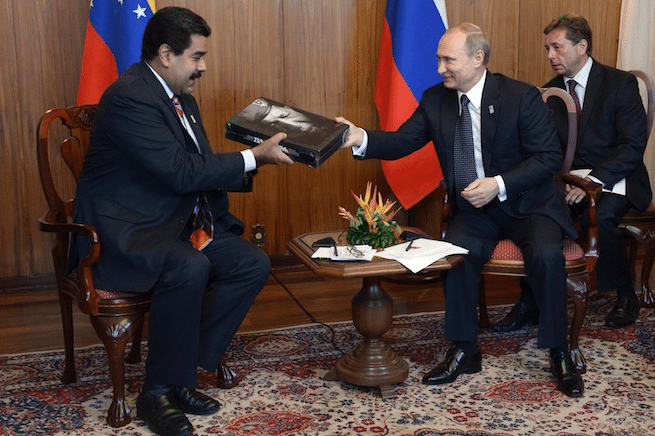
Secretary Mnuchin has spoken out against Maduro’s “decimation of the Venezuelan economy and spurring of a humanitarian crisis,” warning investors against taking part in the currency transmission.
Maduro has described the currency as possessing the capacity to take on “Superman,” a term he uses to refer to the US Government. He attempted to draw initial investments from Turkey, Qatar, and other European nations—a move which would stand in conflict with sanctions placed upon Caracas from DC.
On April 13th, President Trump is set to take part in the Summit of the Americas in Lima, marking the President’s first trip to South America since his inauguration.
CLOUD ACT: A Hidden Piece of Legislation Within The 2,200-page Omnibus Spending Bill
On Friday, the Trump Administration preempted a government shutdown, inking a $1.3 trillion federal spending bill which was intended to mainly cover the topic of future government spending.
The CLOUD Act, also known as the Clarifying Lawful Overseas Use of Data Act, provides domestic and international law enforcement with great power to access individual data cross-country.
Some of the key components contained within the act are the ability of US law enforcement such as local police or federal agents to access “the contents of a wire or electronic communication and any record or other information,” according to the Electronic Frontier Foundation. This, without regard for the location of the information around the world. This could mean that US law enforcement agencies could require a service engine like Facebook or Google to hand over user content and data even if it is located outside the country and without regard for the corresponding nation’s privacy regulations.
A second key component provides the President with the power to enter into executive agreements with foreign governments and provide access to the respective government of user data in the recipient country.
As Lima Charlie previously reported on, the US v. Microsoft case is currently being heard by the Supreme Court, simultaneously, and the recent passage of the CLOUD Act is likely to have a spillover effect on the verdict in the case. Given that the justices were not convinced by Microsoft’s assertion that data stored overseas should not be accessible by government prosecutors, the CLOUD Act has drawn broad support from companies like Microsoft, Apple, Google, and Facebook who believe its passage could bring a swift end to the case.
Per the case, US authorities procured warrants for emails the government is seeking in connection with a drug trafficking investigation but the data is being stored on a Microsoft server in Ireland. While privacy groups oppose the act, the legislation is supported by the Trump administration and Microsoft and is likely to be a key document in the decision of the case in June.
Ireland Seeks Risk Awareness for Crypto Investors in Creating Blockchain Working Group
The most recent actor in the charge to bring regulation and risk-protection to the cryptocurrency and blockchain sector is Ireland’s Department of Finance.
In its accompanying report, the country puts the collective value of the global virtual currency market into perspective. The figure was about 420 billion Euros at the beginning of February 2018, making the market larger than Ireland’s 2016 gross domestic product or almost four times the combined market capitalization of the Irish Stock Exchange’s 20 largest companies, as seen in the graphic below.
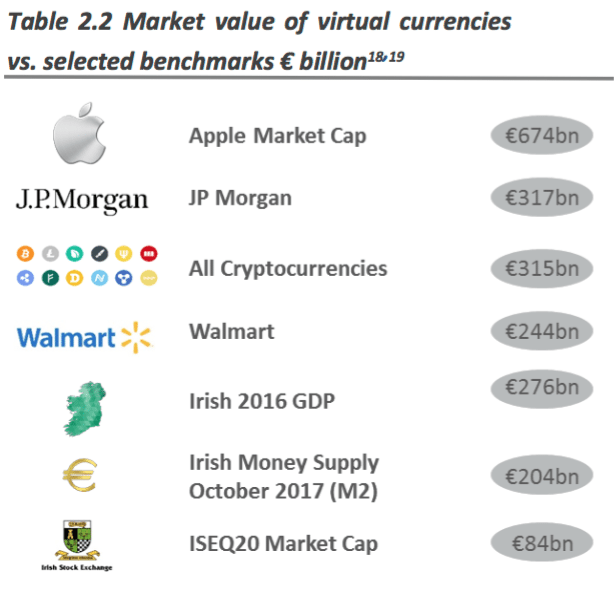
The country estimates about 6.3% of venture capital that has been invested in the nation from 2012 to 2016 was directed to Ireland-based blockchain companies, a shocking figure in comparison to that of the UK or Switzerland, as seen below.

The report cautions users against cyber crime and the potential for such risk given the ever-expanding market, endeavoring to bring a cohesive approach to regulations surrounding the development and monitoring of the technology.
Rediscovering the Stilwell Road: An American-GI-Built WWII Path as a Geopolitical Gateway in Myanmar Markets?
On Wednesday, Myanmar President Htin Kyaw announced he would be stepping down following health concerns, via a Facebook post from the administration. Kyaw was the first civilian president of the nation and the first leader to be brought to power in free elections.
Kyaw served as a crucial ally in the government for Aung San Suu Kyi, state counselor and a constitutionally barred figure from ever assuming the presidency. Through Kyaw, her childhood friend, Aung San Suu Kyi was able to channel her voice and power. However, much of the opposition to the Myanmar government and Suu Kyi comes from international rebuke over its failure on the Rohingya crisis in Rakhine. An estimated 700,000 Muslims fled violence in Myanmar for Bangladesh since August of last year, with violence against the Muslim minority at an all time high. The exodus has been described by the UN as one of the fastest growing refugee crises in the world.”
The 10th leader of the country is widely expected to be U Win Myint who is the current vice-president, following Kyaw’s resignation. He is widely respected, as a member of Suu Kyi’s ruling National League for Democracy.
Regardless of the result of the election, geopolitically Myanmar is a key investment especially for business leaders in India, a country which has recently proposed building a pipeline across its border to Myanmar. Myanmar is an attractive gateway for Southeast Asia from the Indian point of view, geographically. India’s Look East and Act East Policy, thus, sees key gains to be made in building an alliance with its neighbor by utilizing the North East Region as a passage for trade.
One possible trade route—a path which has remained inactive for decades—is known as the Stilwell Road, a strategic bridge of 1,725 km (as pictured below) that links India to China through the conduit of Myanmar.
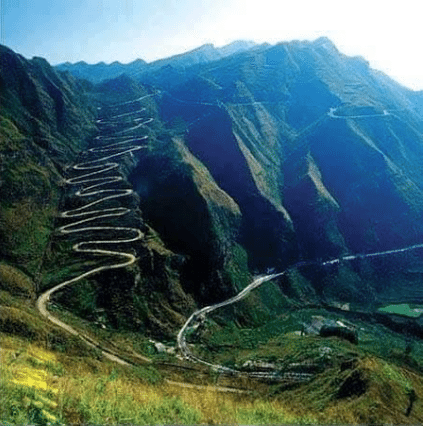
The road was originally built by the US during World War II, following the Japanese cordoning off of China by sea in 1937. The Allies, faced with Rangoon under Japanese control, built the road out of sheer necessity as an alternative supply route to the Burma road, under the direction of General Joseph Warren Stilwell.
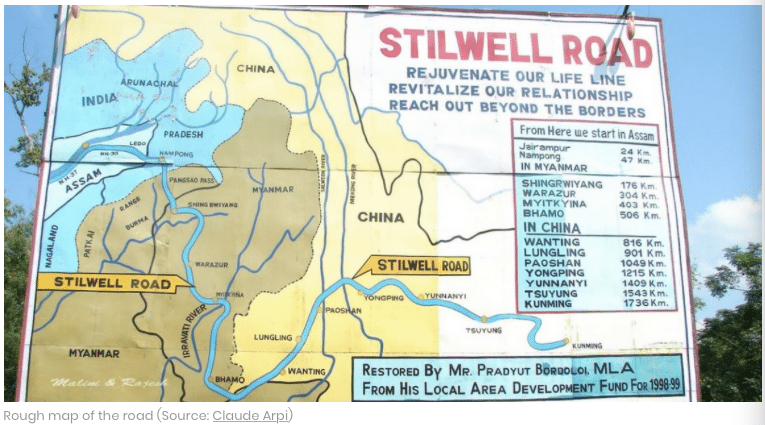

However, following the close of the War, the road has not received much traction from a trade standpoint. The road could establish a confluence of trade interests between India, China, and Myanmar given its beginning in the northern Indian town of Ledo and ending point in China’s Yunnan Province. Despite the benefits, concerns over the increasing activation of militants in Assam and the possibility of Chinese products encroaching upon Indian markets constitute some of the major drawbacks of the opportunity.
Nevertheless, prospects for connecting Southeast Asia, South Asia and Southwest China remain optimistic as the region attempts to work together as one powerful burgeoning market for investors.
44 African Nations Coalesce in Historic Free Trade Pact: Investor Impact
Spotlight: Tanzania
44 of the 54 African Union member states signed onto an agreement to green light the Continental Free Trade Area, connecting 1.2 billion people—almost the population of India—under its wing.
According to the United Nations Economic Commission for Africa, the deal is projected to boost trade within the continent by 53%, ending import duties as well. One major gain to come out of the pact was the goal of a single continental market for goods and services with free movement of business and investments.
Nations involved in the treaty include those on pace to lead the pack as the best markets in Africa. Tanzania, for example, was named by the Barclays Africa Group as outpacing Egypt, Morocco and Ivory Coast in sustainable and inclusive growth, reaching a 44% mark on its Index.
As seen below, Tanzania’s GDP grew 6.8% in the third quarter of 2017, attributing the growth to gas production, diamond, and coal.
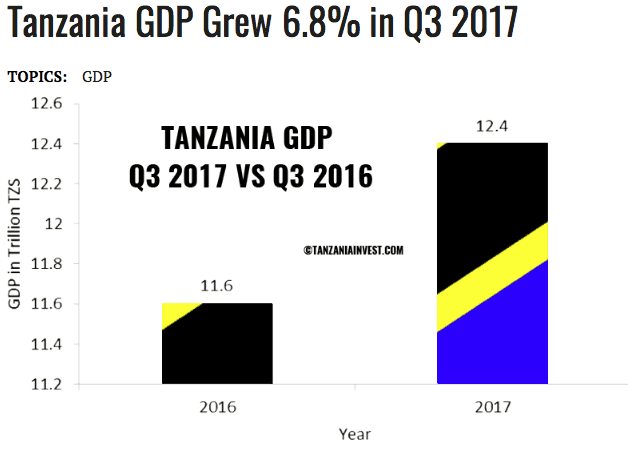
Furthermore, in its 2017 edition of Africa’s Pulse (as included below), World Bank analyzed key African economies, noting Tanzania’s resilience and potential was particularly crucial as a key player on the continent. The country is one of seven with growth rates above 5.4%, including Ivory Coast, Ethiopia, Kenya, Mali, Rwanda, and Senegal.

Nevertheless, Tanzania still has gains to be made in public investment, given that it falls in the low region, along with South Africa, Zimbabwe, Madagascar, and Nigeria across countries in Sub-Saharan Africa, as referenced below.
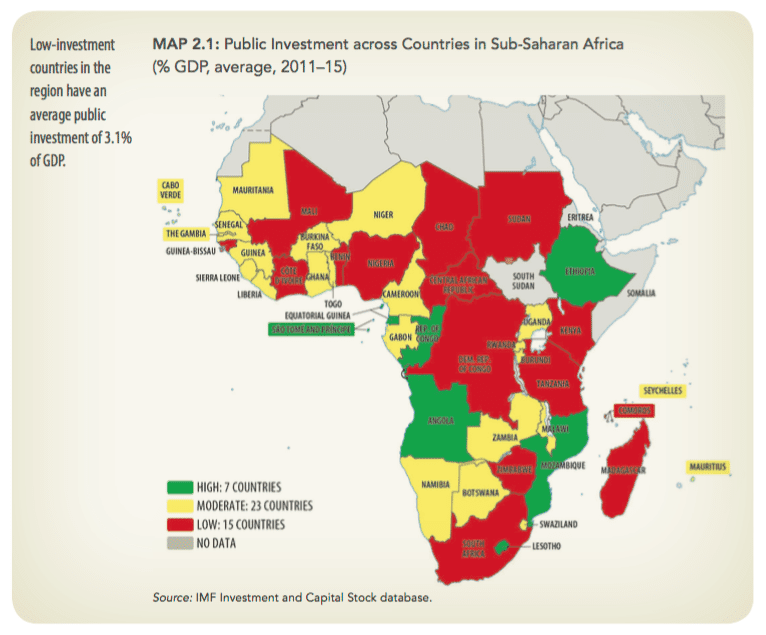
The agreement made between the 44 countries, including Tanzania, represents a positive step in the direction of building capital markets from the “buy side.” Institutional investors are critical to the vibrancy of a region and a recent survey from Brookings found that institutional investors would be interested in regional infrastructure funding in cross-border projects, as seen below.
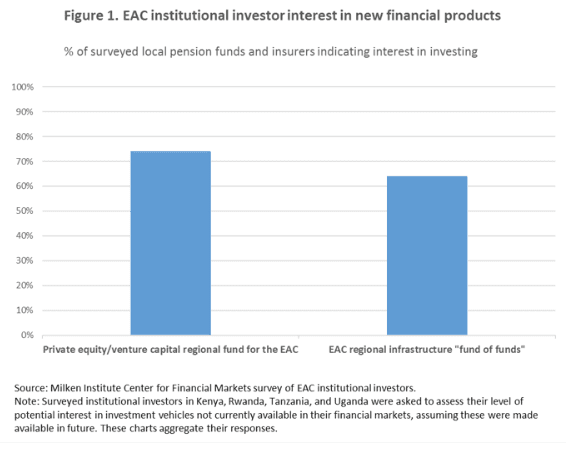
While this survey pertains mainly to Eastern African markets, the agreement is still likely to produce the necessary cooperation and cross-boundary alliances that would prove fruitful for investors in the region on the whole. Anheuser-Busch InBev, the globe’s largest brewer, for instance, plans to invest $100 million dollars in a new brewery in Tanzania, with the company’s President of East Africa Business expecting to reach maximum capacity of current breweries by 2020.
Calypso 1 Discovery: Reshaping Energy Geopolitics and Natural Gas Investor Hotspots in Cypriot Waters
In February, Cyprus’s government sent ships to commence drilling operations in disputed waters between the country and Turkey to the rebuke of Turkish President Erdogan. In response, Erdogan sent Turkish warships to preempt the operation, an act largely seen as a show of brinkmanship by the Cypriot government.
The tensions have a long, antiquated history, given that Turkey believes its self-characterized Turkish Republic of Northern Cyprus should have sole access to offshore resources given that the drilling area is delineated under Ankara’s maritime jurisdiction.
Through more recent geological surveys, the Mediterranean has been found to be the source of great, untapped potential for gas production, especially the deep reserves around Cyprus, as can be seen below.
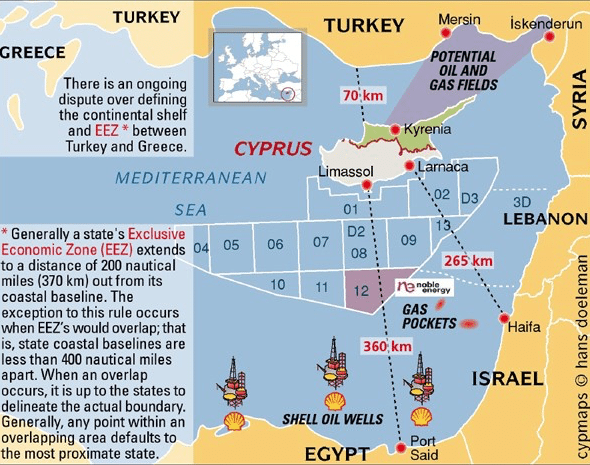
If access to the wells can be maximized, Europe would be much less dependent on Russia for gas and would, instead, have access to its own competitive supply.
At the moment, the US Navy has an amphibious assault ship on track to Cyprus, along with two exploration vessels by ExxonMobil in preparation for drilling to begin.
From an investor perspective, the Eastern Mediterranean is a clear source of investment, with Israel trying to develop major gas deposits in the region for over 10 years. Even Egypt has entered the fray, having recently reached an agreement with Noble Energy to sell gas from offshore Israel to Egypt.
On February 8th, ENI, an Italian oil and gas company, made a major announcement revealing a critical gas discovery offshore of Cyprus. The well was “drilled in 2,074 meters of water depth reaching a total depth of 3,287 meters and was found in Block 6 Offshore Cyprus with Calypso 1 NFW”. ENI does not recognize the Greek Cypriot government and, thus, warships were sent to the region to prevent the company from drilling on behalf of Cyprus or Egypt.
The promise and potential for geopolitical conflict inherent in the discovery can be seen below, given the multinational claims that are likely to stem from its proximity to rivaling neighbors.
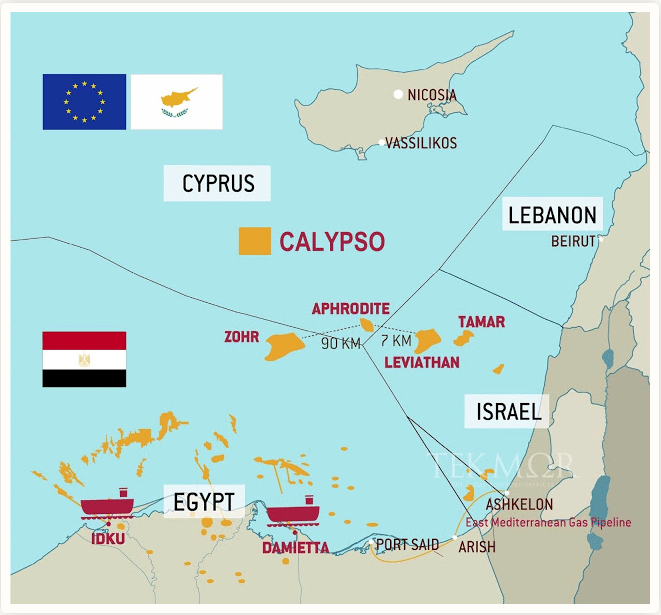
Investment in Space Startups
Spotlight: Japan
While half the people currently in space today are American, a figure that can interestingly be gleaned here, many countries which have not been historically known for space travel are investing in their future prospects for precisely that.
In Japan, using an almost $1 billion dollar funding pool, the country is encouraging space startups to burgeon.
Startups will receive as much as 10 million yen annually to file for patents and cover development and research costs. Investors and venture capitalists will enter the landscape once the top-tier of startups has been identified, demonstrating the highest degree of promise and potential for success. Development Bank of Japan and Network Corp. of Japan are currently funding the venture and will provide loans over the course of 5 years, beginning in 2018.
Tokyo’s ispace is just one example of a startup that has seen great investments in recent years, receiving $90.2 million dollars during a recent round from Suzuki Motor and Japan Airlines.
Figures from The Economist demonstrate that more and more nations are investing internally in space companies and programs, as seen in the image below.

While most countries have satellites, the space-launching countries with satellites continue to grow as nations turn an eye to investment in this market.
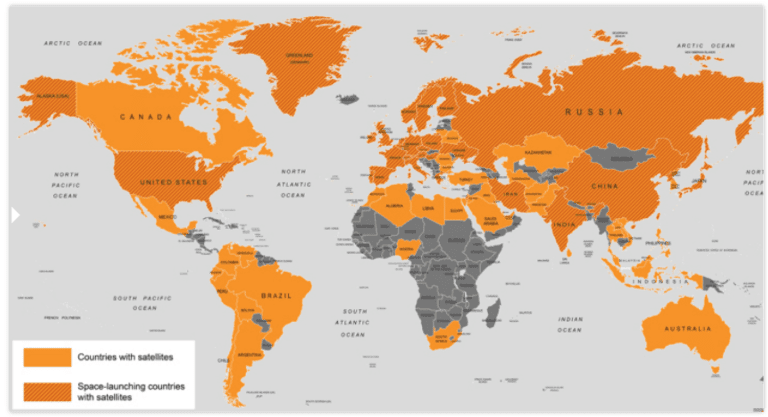
Even the European Space Agency announced this week that it is setting its sights on exoplanets as its next mission. The study of the composition of planets around other stars will lead researchers to launch the Characterising Exoplanet Satellite by the end of 2018, in its “Ariel” mission.
Pipeline Diplomacy
Spotlights: Azerbaijan to Europe & Afghanistan to India
The Trans-Anatolian gas Pipeline (TANAP) being built across Turkey to move gas from Azerbaijani to European markets just received a $1 billion dollar investment from The European Investment Bank.
With it, the pipe carries the ability to unite key ports in Europe with those in Asia, as seen below.
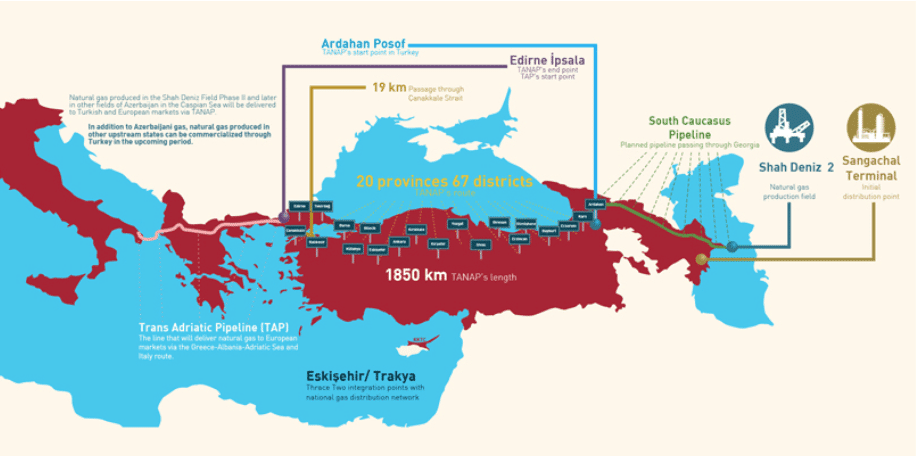
The pipeline is projected to deliver its first round of gas to Turkey in June 2018, supplying Turkey’s state gas transmission and import company BOTAS, which holds a 30% stake in the TANAP project.
In a similar fashion, the heads of state in Afghanistan, Pakistan, India, and Turkmenistan just broke ground on a self-described “Peace Pipeline” in a joint inauguration—a move which signals a great deal of optimism for those pushing for regional cooperation and civility. The project, known as TAPI will be comprised of a 1,814 kilometer pipeline that will move natural gas from the world’s fourth-largest reserve in Turkmenistan through Afghanistan to India and Pakistan, as seen below.
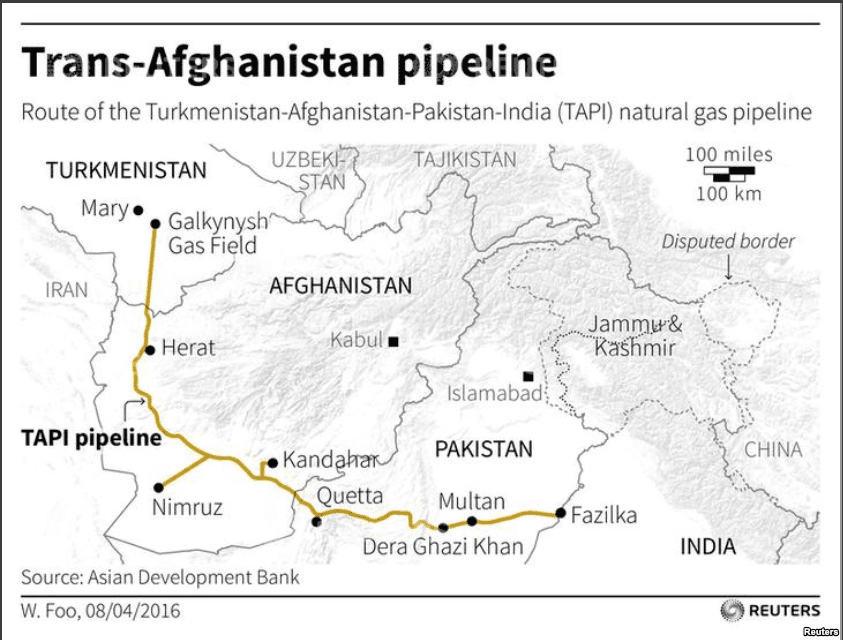
Stocks, Currency & Oil
Following the Trump Administration’s memorandum to impose tariffs on almost $60 billion in Chinese imports, the Dow fell 724 points. However, Trump’s rallying of the stock market since his inauguration has produced strong figures, given that the Dow closed at 19,827.25 on the day of his inauguration and has a cushion of about 3,700 points remaining.
The NASDAQ dropped 0.5%, with the S&P 500 falling by 0.2%. The Dow Jones industrial average climbed 0.2%.
European stocks fell, as well, dropping for a third straight day and experiencing their lowest figures in almost a year. The Stoxx Europe 600 index dropped 0.9% to 365.82 and the pan-European benchmark fell 3.2%.
Crude oil showed its largest weekly gain in eight months, with international benchmark Brent crude climbing 6.6% and reaching $70.58 on Friday. With speculation that President Trump is considering withdrawing from the Iran deal, Tehran’s export capacities may become limited in the global market.
The US Dollar fell 0.5% reaching a weekly loss of 0.9%, while gold futures peaked to their highest finish in over a month, gaining about 3% for the week. Silver inched higher by 1.2% for a weekly increase of 1.9.
LIMA CHARLIE NEWS
[Edited by Nikita Roach]
Lima Charlie provides global news, insight & analysis by military veterans and service members Worldwide.
For up-to-date news, please follow us on twitter at @LimaCharlieNews
In case you missed last week:

![Image This Week in Business Intelligence [Lima Charlie News]](https://limacharlienews.com/wp-content/uploads/2018/03/This-Week-in-Business-Intelligence-Lima-Charlie-Business-Intel-Report.png)


![Image The Trouble With Turkey’s Economy [Lima Charlie News]](https://limacharlienews.com/wp-content/uploads/2019/02/Trouble-with-Turkeys-Economy-01-480x384.jpg)
![Image Drop in oil prices may trigger unintended consequences [Lima Charlie News]](https://limacharlienews.com/wp-content/uploads/2018/11/main_900-480x384.jpg)
![image Resistance mounts against China's President Xi Jinping [Lima Charlie News][Photo: Johannes Eisele / AFP]](https://limacharlienews.com/wp-content/uploads/2018/08/Resistance-mounts-against-Chinas-President-Xi-Jinping-480x384.jpg)



![Image Memorial Day may soon be a remembrance of democracy and those who had the courage to defend it [Lima Charlie News]](https://limacharlienews.com/wp-content/uploads/2018/05/Memorial-Day-may-soon-be-a-remembrance-of-democracy-and-those-who-had-the-courage-to-defend-it-Lima-Charlie-News-480x384.png)
![The Mind of Bolton - AUMF and the New Iran War [Lima Charlie News]](https://limacharlienews.com/wp-content/uploads/2019/05/Inside-the-mind-of-Bolton-Lima-Charlie-News-main-01-480x384.png)
![Image The Trouble With Turkey’s Economy [Lima Charlie News]](https://limacharlienews.com/wp-content/uploads/2019/02/Trouble-with-Turkeys-Economy-01-150x100.jpg)
![Image Drop in oil prices may trigger unintended consequences [Lima Charlie News]](https://limacharlienews.com/wp-content/uploads/2018/11/main_900-150x100.jpg)